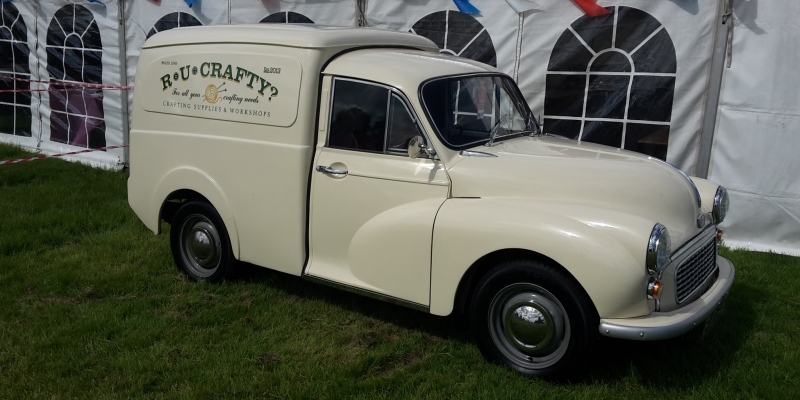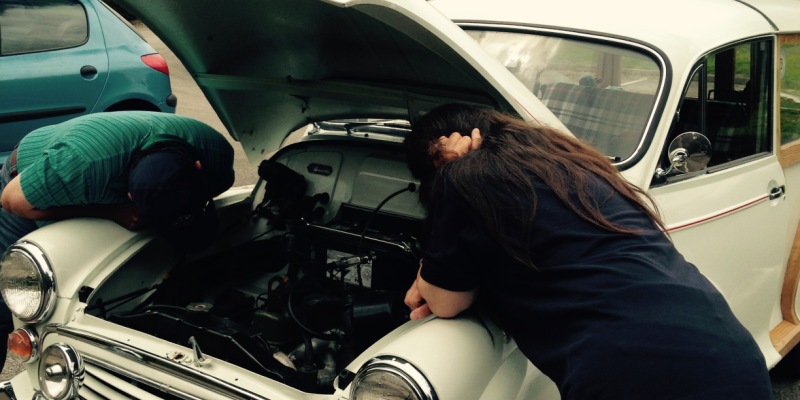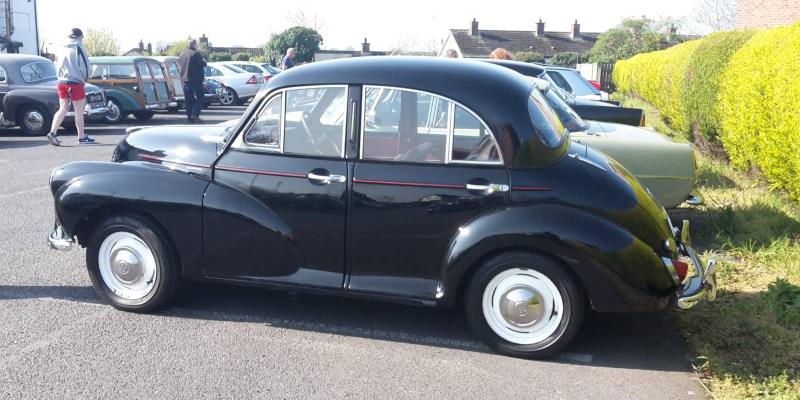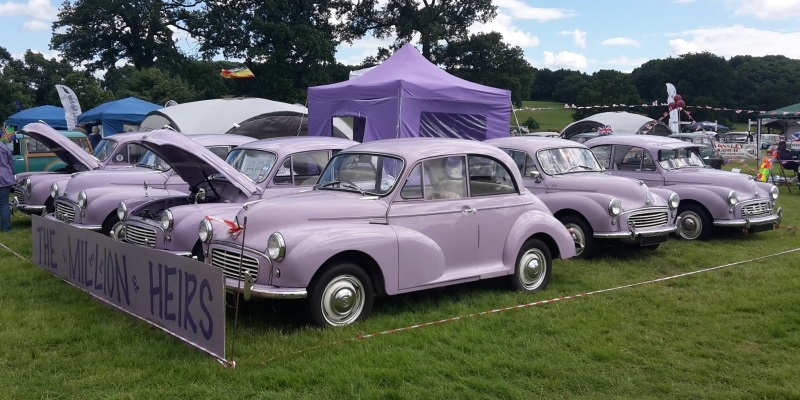Morris Minor Specials
The history of the Morris Minor from Series MM to Morris 1000 has been well documented in many books and websites. The Morris Minor was used for a variety of uses over the years, not least the commercials.
The GPO ordered so many with different specifications that books have been written on the subject. The famous Minor 1000000 is briefly covered under Morris Minor History but here are some others you may or may not know about.
I have referred to the different series designation of Morris Minors on this page. If you are confused by the series designation, here’s a little explanation.
Series MM – 1948 to 1953 (side valve)
Series 2 – 1952 to 1956 (803cc OHV)
Series 3 – 948cc; 1956 to 1963 (948cc OHV)
Series 4 – Given to the Morris Mini Minor 1959
Series 5 – 1098cc; 1963 to 1971 (1098cc OHV)
Disability Minors
Disability Minors were built in the late 1950s and into the Sixties. Disabled Minors were built after the Minor 1000 was introduced in 1956, but had may things in common with the earlier series 2 models. Early disabled Minors were fitted with 803cc engines with series 2 badges but with the single piece window screens.
All were 2-door saloons, later on in production they had the normal engine size and badges which make them more difficult to spot. Some were fitted with hand controls; all had sliding seats and further opening front doors. Disabled Minors had the standard type plain door panels and did not come with over riders.


Police Cars
Special specification cars were supplied to the police force for use as ‘beat’ cars. The vast majority of Minors supplied to the police force were 2-door Saloons, but there where some Travellers and 4-door Saloons supplied as well.
Most where finished in Bermuda blue and white, depending on use and district could be finished in white, black, Trafalgar blue or any combination that was needed. Interiors where mainly black with one or two cars finished with red upholstery, most seats where fitted with the diaphragm spring front seats, for the larger Bobby!
Other special equipment might have been two way radios, calibrated Speedos, inertia reel seat belts and swing mounted exterior wing mirrors. In order to cope with the use of additional blue flashing lights and radios some where fitted with an 11AC alternator.
Cars fitted with roof mounted blue lights would also have had a zipped headlining to access the workings. Panda cars were supplied late in production and all would have been Series V 1098cc.


Military Minors
Vehicles supplied to HM government for use with the armed forces and other government uses seem to be all Series V type minors fitted with 1098cc engines. Travellers seem to have been the favourite variant, when supplied to the Army they were finished in Bronze green with body coloured grill and wheels with either autumn leaf or black interiors.
RAF Travellers were finished in RAF blue grey, RN vehicles were bark blue or black. All came with plan door trims, earlier type rubber floor matting and can been identified by an ID plate on the passenger side of the bulkhead in the engine bay and in some cases fixed to the glove box lid. Travellers were designated car utility 4×2 Morris 1000. For more details see www.govminors.mmoc.org.uk/history.html


Not really specials but …
LCV Series C
Introduced in 1968, BMC as response to cutting the A35 LCV from the Austin range, a small LCV under the Austin banner was needed and so it was decided to rebadge the popular Minor LCV under the title Austin Minor!
These are also designated as Series C and are identified, by having Austin Badges on the bonnet and the steering wheel boss and a ‘crinkle cut’ grill. Otherwise they follow the same specification as the rest of the Minor 1000 range and finished at the same time as the rest of the LCV range. Austin badged variants’ chassis numbers start with an ‘AA’ rather than the ‘MA’ of Morris badged variants.


LCVs Chassis Cabs
Morris Minors could be supplied in either Saloon, Convertible, Traveller, Van and Pickup forms. One other form that could be specified was as a chassis cab. This was an LCV chassis with a cab but no back body. The cab could either have an open back or a closed back like on a pickup.
The idea being that a company could buy a chassis cab and have a custom back fitted. Van chassis number began with MAV, Pickups would be MAU and chassis cabs would be MAQ. Chassis cabs usually have better rear chassis as this would have been plain sight and would have been better painted to look better to customers!

The LCV chassis cabs lead to the creation of some rare LCV minors such as the ‘Gown van’, the DOMI vans from Denmark, the series 2 Cunard de-luxe van, Minor ice cream vans among many others!
One LCV not mentioned is the famous Curry’s high top van, which was converted out of the standard van with a fibreglass extension to the roof and to the tops of the doors. The top is riveted to the standard guttering on the van and doors are extended up to meet the roof by riveting strips to the tops of the standard van rear doors. It was designed in order to deliver the new upright fridge freezers available at the time. Definitely a special!


CKDs
CKD and PKD Morris Minors were exported all over the world, from Canada to Australia! Exports could take the form ofeither complete cars, or as kits with some assembly required. PKD or Partially Knocked Down kits were the complete car assembled with the exception of glass, tyres and other interior items which were manufactured and fitted in the country of destination.
The more common form of kit form was CKD or Completely Knocked Down. CKD kits were crates of components (19,587 individual parts in all) needing fully assembled at the destination on an assembly line using jigs and special equipment form Cowley. CKDs went to Australia, New Zealand, India, Africa, Holland, Denmark as well as the Republic of Ireland.
CKDs had different colour combinations, locally made electrical components, seats, glass, tyres, etc., all to lower import costs and provide more employment for local populations.


Irish built Minors were assembled in Dublin by G.A. Brittain from as early as 1948. Most were saloons and convertibles, no Travellers were recorded as being built as no locally sourced wood was up to the job apparently! Irish built cars differed from British assembled cars in some areas.
No matter what series of car all left with body coloured grill and wheels (even the 1000s). Wing piping was black on all cars, interior colours were different from British cars with plain door cards even on delux specification cars in early years and Irish made glass has small shamrocks on the Tripplex stamp.

The most noticeable feature (with the bonnet open) was a seam welded join on the bulkhead. If you have details of any other differences or colours used please get in touch. The last Irish assembled CKD was in 1971, but another was made out of stock parts in 1975 which was a Teal Blue 4-door.





